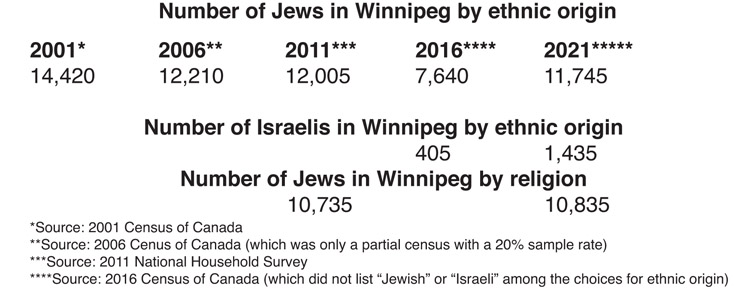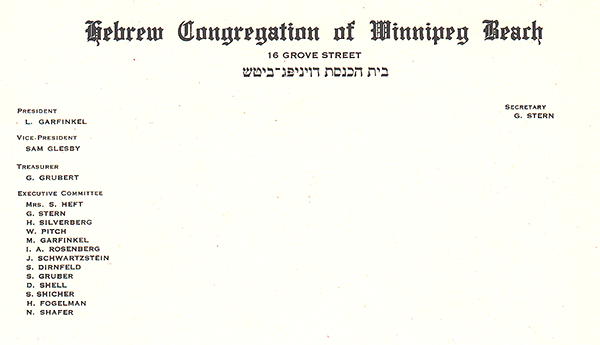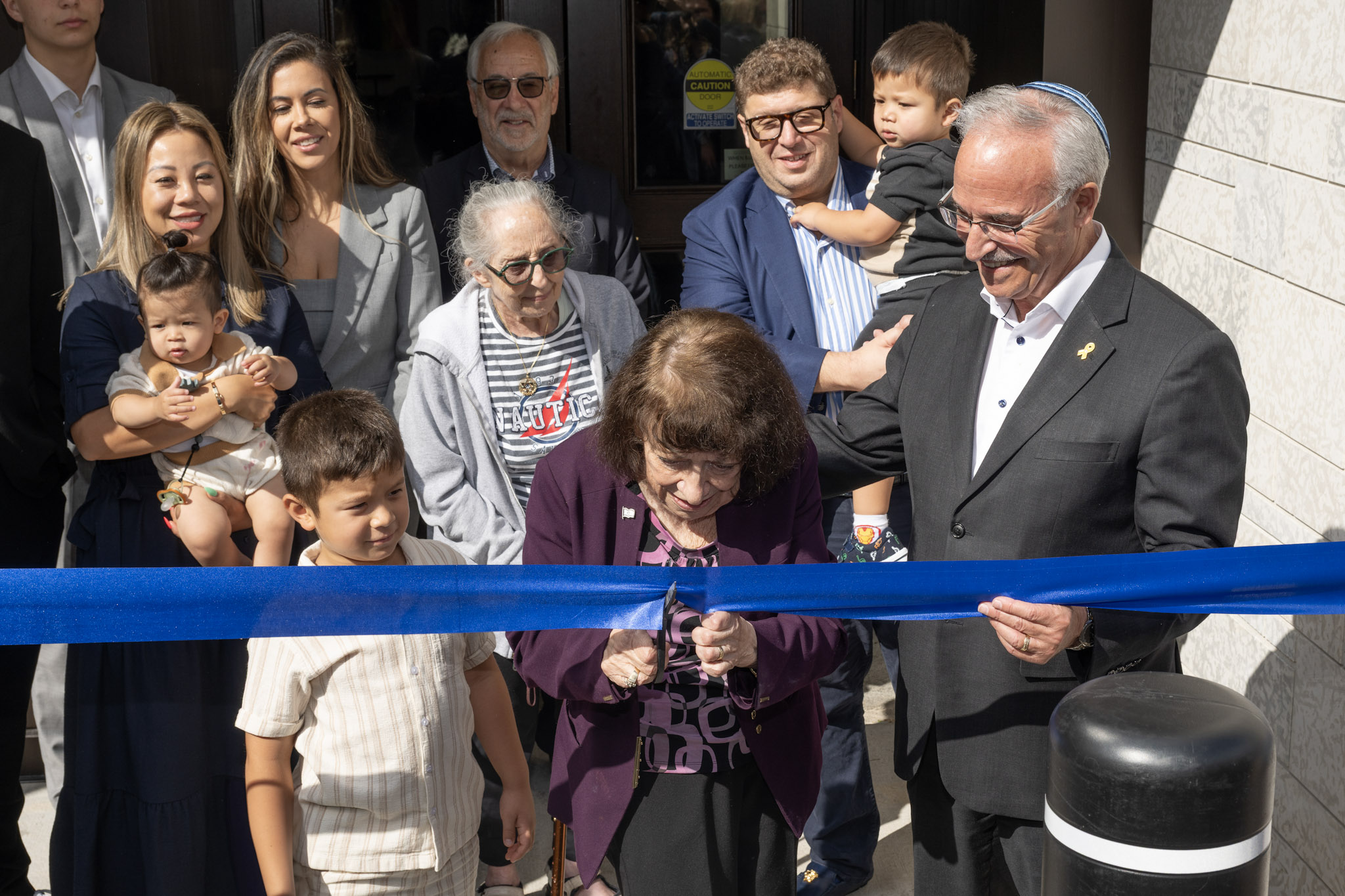Local News
Jewish population of Winnipeg shows slight increase in past 10 years – but 2021 census does not give definitive answers as to what the size of our Jewish population really is
By BERNIE BELLAN The number of individuals in Winnipeg who report that their ethnic origin is Jewish has declined somewhat from the number reported in the 2011 National Household Survey (which was the last reliable report on the ethnic and religious composition of Canada produced by StatsCan).
However, set against the decline in the number of Winnipeggers who reported their ethnic origin as Jewish was a marked increase in the number that reported their ethnic origin was Israeli.
The number of individuals who reported their religion was Jewish also showed a very slight increase from 2011 to 2021.
Those are some of the most significant findings from the latest release of detailed information from the 2021 census, which came on October 26, when StatsCan released a whole trove of documents about immigration and ethnicity – with statistics about religion at the very end of the document release.
According to the 2021 census, 11,745 individuals in Winnipeg reported their ethnic origin as Jewish. In 2011 the figure was 12,005. However, considering that 1,435 individuals reported their ethnic origin was Israeli (as opposed to a total of 340 in 2011), when you add the two figures together the total comes to 13,180.

As for religion, the number of Winnipeggers who said their religion was Jewish stood at 10,740 in 2011. The 2021 census reported the number as 10,835, an increase of 95.
We have been waiting anxiously for the results of the 2021 census ever since results from the 2016 census were so wildly inconsistent with all previous census results when it came to showing that the number of Jews, not only in Winnipeg, but everywhere in Canada, had declined precipitously.
As we have been reporting repeatedly ever since results of the 2016 census were published, the reason for what were considered aberrant results in the 2016 census was that, for the first time, “Jewish” was not listed among the 20 choices for ethnic ancestry in that census. Instead, one would have had to write in “Jewish” as an answer. As a result, even StatsCan conceded that the low number of individuals who responded that their ethnic origins were Jewish was unrealistically low.
In the 2016 census also, the likelihood is that a number of respondents who might otherwise have responded “Jewish” if it had been given in the list of examples of ethnic origin, instead likely chose “Canadian,” since Canadian was one of the 20 examples listed.
As a report from StatsCan noted, “After the 2016 Census, concerns were raised that changes to the list of examples of ethnic and cultural origins included as part of the question were affecting response patterns. Concerns were also raised about the wordiness of the question, which made it difficult for certain people to read and respond to the question.”
StatsCan went on to explain that “respondents were more likely to report an origin when it was included in the list of examples and, conversely, less likely to report an origin if it was not included in the list.”
As a result, StatsCan made major changes to how ethnic origin was tabulated in the 2021 census. The question that was asked was the same as what had been asked in previous censuses: “What were the ethnic or cultural origins of this person’s ancestors?”
That question was followed by a further explanation:
“Ancestors may have Indigenous origins, or origins that refer to different countries, or other origins that may not refer to different countries.
But the 2021 census, which was required to be filled out online, actually gave a link to “a list of over 500 examples of ethnic and cultural origins,” of which both “Jewish” and “Israeli” were among the choices.
One might well wonder though whether many recent immigrants to Winnipeg who might be considered ostensibly Jewish might also have filled in different ethnic origins, especially individuals with Eastern European roots. (There was only room for one answer to the question about ethnic origins.)
But then we run up against the issue of the relatively low number of individuals who said their religion was “Jewish” in the 2021 census.
The religion question that appeared in the 2021 Census, “What is this person’s religion?” was the same as the one that was asked in the 2011 National Household Survey and in the 2001 and 1991 censuses. It also had the same basic format: there was a write-in box in which respondents could report their religion, as well as a mark-in circle for indicating “No religion.”
Thus, while one might posit that a certain number of immigrants to Winnipeg might have Jewish roots, if they didn’t answer that their ethnic origins were either “Jewish” or “Israeli” and they also didn’t indicate that their religion was “Jewish”, is it fair still to consider them Jewish?
In an interview I conducted in August with Faye Rosenberg-Cohen, who is about to retire as the Jewish Federation’s Chief Planning and Allocations Officer, I asked Faye how many immigrants make up the Jewish population of Winnipeg now?
Faye responded: “I can honestly say when I look at those numbers it’s somewhere around 1/3 of the community.”
JP&N: “So you’d say it’s somewhere between 4-5,000?”
Faye: “I think it’s more than that.”
If what Faye said was true then the Jewish community would number at least 15,000.
I indicated my skepticism at that time, saying “You know that I’ve always been skeptical about the numbers that have been used by the Federation for the population of the Jewish community. I think though that it’s always been more of a case of identification – who identifies as Jewish?”
In the final analysis, there is nothing in what StatsCan has just reported that would back up the notion that our Jewish population here is over 15,000. Yet, there is one more possibility that might allow the Jewish Federation to argue that our population is closer to 15,000. That will require a more detailed analysis comparing the results for respondents who said their religion was “Jewish” but their ethnic origin was not.
Following the 2011 National Household Survey, which was the first census that showed a sizeable drop in the size of our Jewish population, I entered into an email exchange with a statistician from StatsCan as to whether it was possible that our Jewish population was much larger than 12,010, which was how many respondents indicated their ethnic origin was Jewish back in 2011.
That statistician did a much deeper analysis of the data than was available to me. He showed that of the 10,740 individuals who said their religion was Jewish, only 7,885 reported that their ethnic origin was Jewish. That was a difference of 2,885. (Clearly there have been a lot of converts within our community). If you added those respondents who said their religion was Jewish, but not their ethnic origin, to the number of respondents who said their ethnic origin was Jewish, you came up with a figure of 14,885. That figure would have been much closer to what the Federation was saying was the size of our Jewish population in 2011.
Is it important? Well, as I’ve been arguing for years, if our Federation is basing its plans for the future on a notion that our Jewish population is much bigger than what is really the case, then those plans are misguided.
Gray Academy has far fewer students than was the case just ten years ago. Brock Corydon, the only other school that offers any sort of an exposure to a Jewish curriculum, also has fewer Jewish students than used to be the case. The Simkin Centre has a very high proportion of non-Jewish residents. Our synagogues have lost huge numbers of members. None of these changes would be reflective of a growing Jewish population.
However, as I’ve just noted, there is a very real possibility that our Jewish population is closer to the figure of 15,000 – which is the figure commonly cited by spokespersons for the Federation. In order to find out though whether that is the case, we’ll need someone at StatsCan to do a similar analysis of data that was done at my request following the 2011 National Household Survey. I’ve already sent a request to StatsCan for a more comprehensive analysis of the answers to the questions about ethnic origin and religion, similar to what was done for me by a StatsCan analyst following the 2011 National Household Survey. We’re hoping to have further answers to the question of how many Jews there are in Winnipeg in a future issue – if we hear back from someone at StatsCan.
Local News
Thank you to the community from the Chesed Shel Emes

We’re delighted to share a major milestone in our Capital Campaign, “Building on our Tradition.” Launched in November 2018, this campaign aimed to replace our outdated facility with a modern space tailored to our unique needs. Our new building is designed with ritual at its core, featuring ample preparation space, Shomer space, and storage, creating a warm and welcoming environment for our community during times of need.
We’re grateful to the nearly 1,000 generous donors who contributed over $4 million towards our new facility. A $750,000 mortgage will be retired in November 2025, completing this monumental project in just seven years.
We’re also thrilled to announce that our Chesed Shel Emes Endowment Fund has grown tenfold, from $15,000 to $150,000, thanks to you, the Jewish Foundation of Manitoba’s FundMatch program, and Million Dollar Match initiative in 2024. Our fund helps ensure that everyone can have a dignified Jewish funeral regardless of financial need.
As we look to the future, our goal remains to ensure the Chevra Kadisha continues to serve our community for generations to come. Our focus now shifts to replenishing our savings account and growing our JFM Endowment fund.
We’re deeply grateful for your support over the past several years.
It’s our privilege to serve our community with care and compassion.
With sincere appreciation,
Campaign cabinet: Hillel Kravetsky, Gerry Pritchard, Stuart Pudavick,
Jack Solomon, and Rena Boroditsky
Murray S. Greenfield, President
Local News
Winnipeg Beach Synagogue about to celebrate 75th anniversary

By BERNIE BELLAN (July 13) In 1950 a group of cottage owners at Winnipeg Beach took it upon themselves to relocate a one-room schoolhouse that was in the Beausejour area to Winnipeg Beach where it became the beach synagogue at the corner of Hazel and Grove.
There it stayed until 1998 when it was moved to its current location at Camp Massad.
On August 2nd members of the synagogue will be holding a 75th anniversary celebration.

As part of the celebration anyone who is a descendant or relative of any of the original members of the first executive committee (as seen in the photo here) is invited to attend the synagogue that morning.
If you are a relative please contact Abe Borzykowski at wpgbeachshule@shaw.ca or aborzykowski@shaw.ca to let Abe know you might be attending or for more information about the 75th anniversary celebration.
We will soon be publishing a story about the history of the beach synagogue, which is something I’ve been writing about for over 25 years.
Local News
Vickar Family cuts ribbon on new Tova Vickar and Family Childcare Centre

By MYRON LOVE In the words of Larry Vickar, the Shaarey Zedek’s successful Dor V’ Dor Campaign “is not only a renewal of the synagogue but truly a renewal movement of Jewish life in our community.”An integral part of that renewal movement was the creation of a daycare centre within the expanded synagogue. On Monday, June 23, Larry and Tova Vickar cut the ribbon, thereby officially opening the Tova Vickar and Family Childcare Centre in the presence of 100 of their family members, friends and other supporters of the project.
The short program preceding the morning ribbon-cutting began with a continental breakfast followed by a welcome by both Fanny Levy, Shaarey Zedek’s Board President, and Executive Director Dr. Rena Secter Elbaze. In Elbaze’s remarks, she noted that Larry and Tova wanted their family (including son Stephen and family, who flew in from Florida) and friends at the event to celebrate the opening of the Tova Vickar and Family Childcare Centre, “not because of the accolades, but because, as Larry put it, he hopes that their investment in the congregation will inspire others to do the same.”
“When Larry and I spoke about what this gift meant to him and the message he wanted people to take away,” she continued, “I couldn’t help but connect it to the teachings of Reb Zalman Schachter-Shalomi whose book – Age-ing to Sage-ing – changes the whole way we look at the concept of ageing and basing it on our ancestral teachings.”
She explained that his concept of “Sage-ing” is based on three key ideas – Discover your meaning and purpose; accept our mortality and think about the legacy you want to leave.
“Larry spoke about these exact concepts when we met,” she said.
Elbaze also noted the presence of Shaarey Zedek’s newly-arrived senior Rabbi Carnie Rose, former Rabbi Alan Green, and area MLAs Mike Moroz and Carla Compton.
Larry Vickar expressed his great appreciation for all those in attendance. “Tova and I are deeply moved to stand here with you today for this important milestone in our community”, he said. “We are grateful to be surrounded by all of you, the people we care about, our family and friends… you who have touched our lives and played some part in our journey.”
